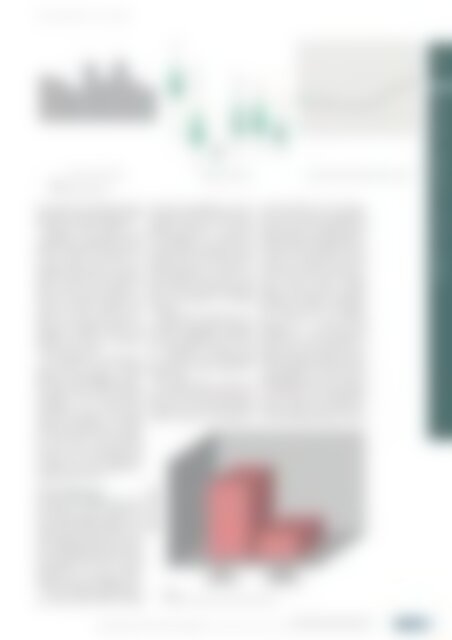atw - International Journal for Nuclear Power | 02.2020
Ever since its first issue in 1956, the atw – International Journal for Nuclear Power has been a publisher of specialist articles, background reports, interviews and news about developments and trends from all important sectors of nuclear energy, nuclear technology and the energy industry. Internationally current and competent, the professional journal atw is a valuable source of information. www.nucmag.com
Ever since its first issue in 1956, the atw – International Journal for Nuclear Power has been a publisher of specialist articles, background reports, interviews and news about developments and trends from all important sectors of nuclear energy, nuclear technology and the energy industry. Internationally current and competent, the professional journal atw is a valuable source of information.
www.nucmag.com
Create successful ePaper yourself
Turn your PDF publications into a flip-book with our unique Google optimized e-Paper software.
<strong>atw</strong> Vol. 65 (2020) | Issue 2 ı February<br />
a) Bar chart with error bars b) Box-whisker type plot c) Continuous variable with upper and lower bound<br />
| Fig. 7.<br />
Beta Probability Distributions.<br />
be needed <strong>for</strong> each option generated,<br />
ahead of the second workshop, which<br />
focussed on the option evaluation.<br />
Members of the project team<br />
designed the CompariCube® study in<br />
advance of the second workshop. A set<br />
of five common key metrics was<br />
identified which could be used to<br />
compare the options on an equivalent<br />
basis. In order to best capture the<br />
relative merits of the four options, a<br />
large set of detailed questions was<br />
created by which to evaluate each<br />
option. The study, which was presented<br />
and completed during the<br />
workshop, evaluated a total of one<br />
hundred and thirty-six questions<br />
across the five metrics.<br />
The evaluation and prioritisation<br />
stage resulted in a list of options<br />
ordered by acceptability to stakeholders<br />
(as shown in Figure 10), with<br />
the yellow colour used to indicate<br />
‘ acceptable to the customer/other<br />
stakeholders’ and the dark orange<br />
colour used to indicate ‘not meeting<br />
customer requirements’. An Uncertainty<br />
Index was also made available<br />
<strong>for</strong> each option. This prioritised<br />
options list was subsequently used<br />
to in<strong>for</strong>m the waste management<br />
strategy <strong>for</strong> the fuel sampling programme<br />
going <strong>for</strong>wards.<br />
relevance to stakeholders on a country-specific<br />
basis, allowing public engagement<br />
activities to be tailored<br />
within member states. A future use<br />
of CompariCube® is proposed <strong>for</strong><br />
creating public-engagement specific<br />
studies based on the concept of the<br />
materiality matrix. The benefits of<br />
using CompariCube® <strong>for</strong> such a purpose<br />
would be in producing a clear<br />
visible output allowing stakeholder<br />
issues and priorities to be readily<br />
compared.<br />
CompariCube® could also be incorporated<br />
into and support other types<br />
of public engagement techniques,<br />
such as the ‘Hybrid Forum’ [10], and<br />
the ‘Backcasting’ technique used<br />
in a proposed social sustainability<br />
framework <strong>for</strong> energy infrastructure<br />
decisions [11].<br />
The Hybrid Forum concept has<br />
previously been used to make a decision<br />
on the best flooding mitigation<br />
strategy <strong>for</strong> a town in the UK, which<br />
involved “experts” and “laypersons”<br />
working together to find a solution<br />
[12]. The principles underpinning<br />
Hybrid Forums see all stakeholders as<br />
equals who have valuable expertise<br />
and knowledge, they facilitate the cocreation<br />
of new knowledge between<br />
“experts” and “laypersons” and they<br />
work on the basis that all issues are<br />
not known in advance of the <strong>for</strong>ums.<br />
Issues instead emerge through<br />
dialogue and can lead to un<strong>for</strong>eseen<br />
solutions to problems and establish<br />
partnerships between stakeholders<br />
that previously held opposing<br />
positions. It is proposed that<br />
CompariCube® could incorporate<br />
input from various stakeholders, no<br />
matter their area of expertise, and is<br />
flexible enough to include new metrics<br />
as they emerge and make the output<br />
understandable to a wide range of<br />
stakeholders allowing the co-creation<br />
of knowledge and understanding<br />
between “experts” and “laypersons”,<br />
where everyone’s input adds value to<br />
the decision-making process, and the<br />
ENERGY POLICY, ECONOMY AND LAW 79<br />
Public engagement<br />
As illustrated in Figure 3, the local<br />
community are a key stakeholder in<br />
the decision-making process. The<br />
Corporate Social Responsibility Group<br />
within Finnish nuclear power company<br />
(Teollisuuden Voima Oyj) (TVO)<br />
uses a Materiality Matrix tool, which<br />
is used to identify the aspects of social<br />
responsibility with the greatest<br />
relevance <strong>for</strong> the company’s stakeholders<br />
and business operations [9].<br />
This tool provides valuable insight<br />
into areas which hold the most<br />
| Fig. 9.<br />
CompariCube® Graphical output showing preferred Option.<br />
Energy Policy, Economy and Law<br />
An Integrated Approach to Risk In<strong>for</strong>med Decision Management ı Howard Chapman, Maria Cormack, Caroline Pyke, John-Patrick Richardson and Reuben Holmes

















